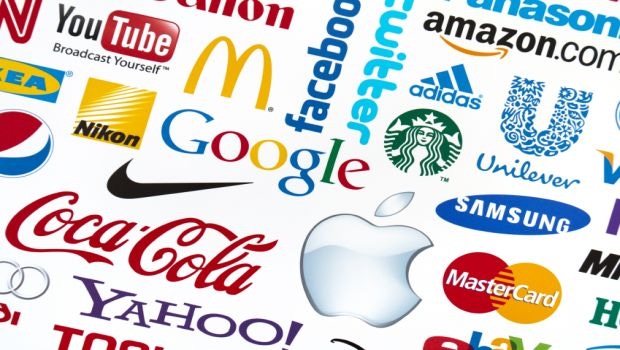Editor’s Note: Food and beverage brands that fail to acknowledge the needs of today’s info-hungry shopper face substantial risk of losing to competitors. Matt Krebsbach, director of Global Public and Analyst Relations at Austin, Texas-based Bazaarvoice, discusses how to effectively execute strategy to satiate the appetite of online food and beverage shoppers in the imminent edible ecommerce revolution.
April 24, 2015

 Editor’s Note:Food and beverage brands that fail to acknowledge the needs of today’s info-hungry shopper face substantial risk of losing to competitors. Matt Krebsbach, director of Global Public and Analyst Relations at Austin, Texas-based Bazaarvoice, discusses how to effectively execute strategy to satiate the appetite of online food and beverage shoppers in the imminent edible ecommerce revolution.
Editor’s Note:Food and beverage brands that fail to acknowledge the needs of today’s info-hungry shopper face substantial risk of losing to competitors. Matt Krebsbach, director of Global Public and Analyst Relations at Austin, Texas-based Bazaarvoice, discusses how to effectively execute strategy to satiate the appetite of online food and beverage shoppers in the imminent edible ecommerce revolution.
The rise in food-focused TV shows, celebrity chefs, and new culinary apps and websites has created a culture centered on food unlike anything the industry has experienced before, and nowhere is this explosion more evident than online.
Whether you are a regular consumer of food blogs, consult the recommendations of like-minded gourmands on recipe and review sites, or habitually engage with images of food on social media, it’s a safe bet that you regularly interact online with some form of food-related consumer-generated content (CGC). After all, we live in a world where people are passionate about what they eat and are increasingly interested in sharing their thoughts online for others to engage with. People now spend more time reading about food through online sources than print, 46 percent to 31 percent, and nearly 49 percent of millennials admit to tweeting or texting while they eat.
With more consumers moving their food and beverage conversations—and, in turn, purchases— online, this is just the beginning. By 2018, the global online grocery market is projected to reach $100 billion, with more than $18 billion of that coming from the United State alone. Given this growth, it’s important that food and beverage brands and retailers become more closely attuned to the three major trends impacting their consumers so they can easily adapt to the changing industry landscape:
Trend 1: The Overwhelming Options
In today’s market, there is no end to the number of available food and beverage options—consumers can choose between hundreds, if not thousands, of products, which can cause many consumers to become overwhelmed with the shopping process. More than that, a complex landscape riddled with tags like gluten-free, organic, local and more has many consumers seeking answers that don’t exist on traditional product labels; answers that, instead, can be found in the opinions and experiences of other shoppers. As a brand or retailer in the food and beverage space, it is critical to provide consumers with as much information as possible out of the gate.
Although consumers want more qualitative brand information, they will still require the basics: nutrition facts, ingredients, flavor variations, etc. All of those fundamentals still need to be provided upfront, but now, supplement them with authentic consumer-generated content—the ratings and reviews, stories, photos and videos from social media that help provide an unbiased point of view of the item and address broader customer questions. And, don’t limit the display of consumer feedback to only the brand website or product page—highlight those opinions across all key consumer touch points, including social media channels, product packaging and in-store displays.
Trend 2: The Availability of Content
As consumers are eating, cooking, shopping and generally living their lives, it’s become common practice to document those experiences with others via social posts, ratings and reviews, photos, and videos. In fact, food is the most active topic on Pinterest, with 57 percent of users interacting with the site’s food-focused content. This should not come as a surprise since CGC not only provides insights into genuine consumer sentiment, but also showcases how other consumers are truly using a product.
Maintaining a steady cadence of new CGC allows regular opportunities for consumers to interact with the brand and each other, but it’s the responsibility of the brand to encourage this kind of consumer engagement. Actively invite consumers to share their experiences with the brand and its products by sending a post-interaction email to customers several weeks after a purchase has been made, or solicit feedback through alternative means like social media. Once you’ve received that feedback, use it to carefully analyze the consumer perception of your brand. CGC will often tip you off to perceptions about the brand or uses for a product that you might not have considered otherwise, which opens the door to enhance messaging, improve product development, and influence many other areas of the business.
Trend 3: The Always-On Consumer
Mobile has transformed the way consumers shop. Consumers today spend more than 15 hours per week researching on their phones and 35 percent of food and beverage page views are accessed directly from a mobile device. When it comes to grocery, consumers want to research nutrition information, ingredients and recipes, often while standing in a store aisle staring at an endless amount of products to choose from. That habit helped the grocery industry nab the top spot for highest level of consumer mobile usage.
Consumers’ growing reliance on mobile devices reminds us that shopping now happens everywhere—not just in-store or in front of the computer—and brands must evolve their strategies to keep pace with these changing shopping habits. The best way to start is by creating a seamless experience across devices and ensuring that branding and content are enhanced for all scenarios. More than that, don’t assume that the consumer will find your site on their own; make it as easy as possible by optimizing all content for SEO. The fresh, keyword-rich content housed in many consumer reviews has been a proven contributor to better search rankings and increased traffic on the brand page, and will be key in securing a new contingent of online shoppers.
The growing base of consumers aware of the benefit of online grocery shopping represents an incredible opportunity for food and beverage brands to capture new market share. Those people are already deeply engaged in conversation about the industry online, and the bottom line is that food and beverage brands who don’t join that conversation now risk losing their customers to companies more proactive in addressing their information needs.
Matt Krebsbach is the director of Global Public and Analyst Relations at Austin, Texas-based Bazaarvoice, an international network that connects brands and retailers to the authentic voices of people where they shop. Each month, more than 700 million people view and share authentic opinions, questions, and experiences about tens of millions of products in the Bazaarvoice network. The company’s technology platform amplifies those voices into the places that influence purchase decisions. Network analytics help marketers and advertisers provide more engaging experiences that drive brand awareness, consideration, sales and loyalty. Krebsbach can be reached at [email protected]
You May Also Like




.png?width=800&auto=webp&quality=80&disable=upscale)